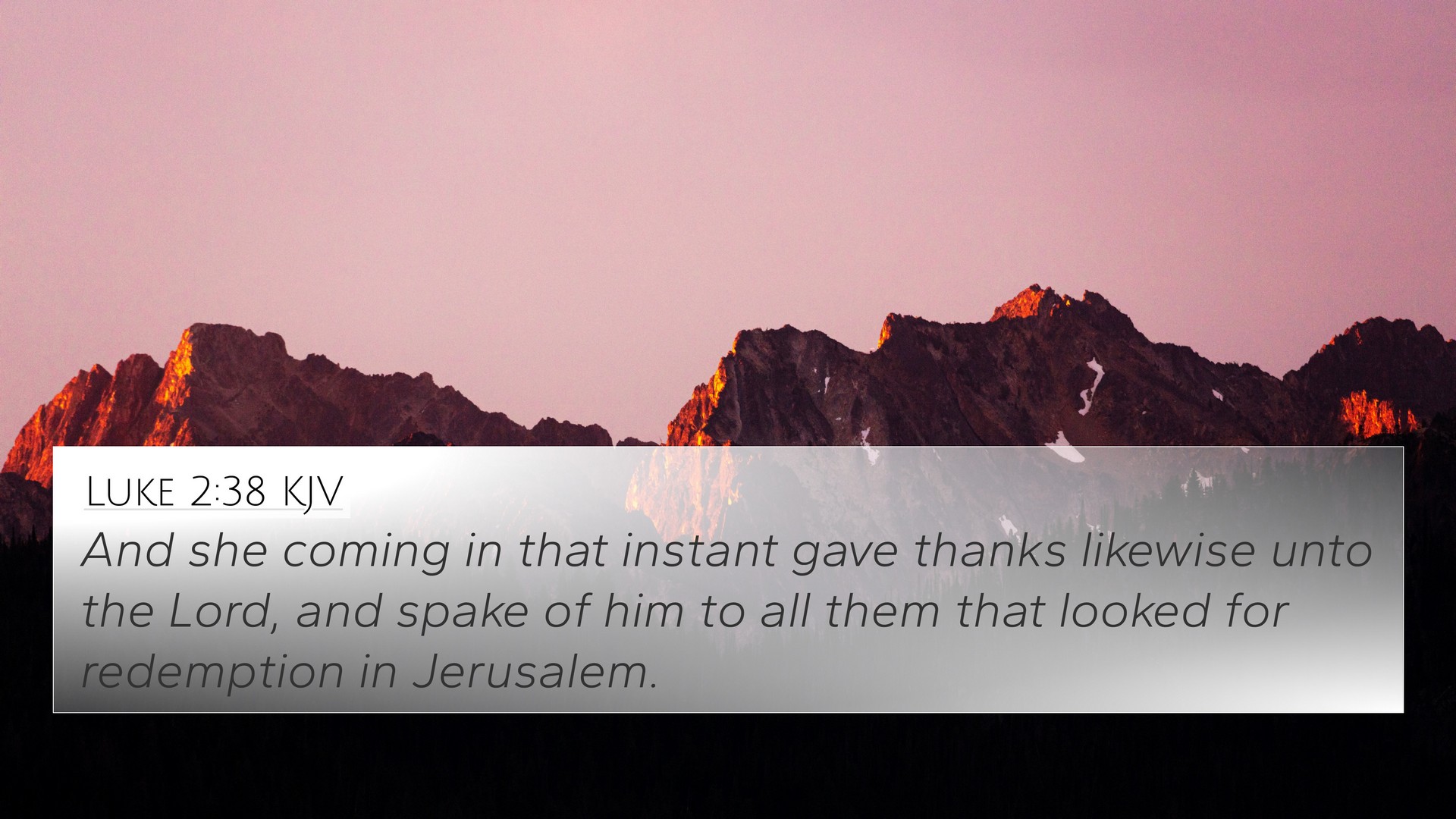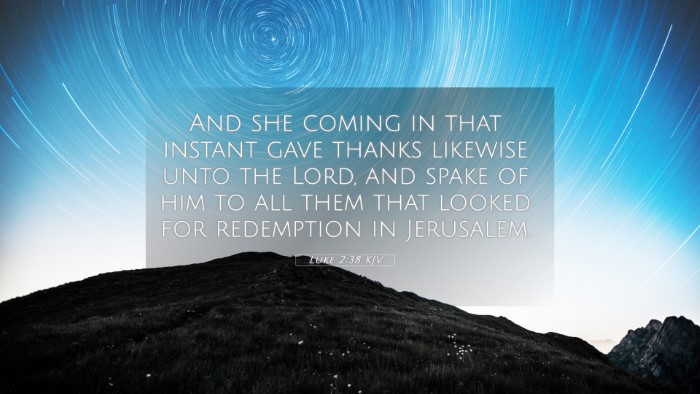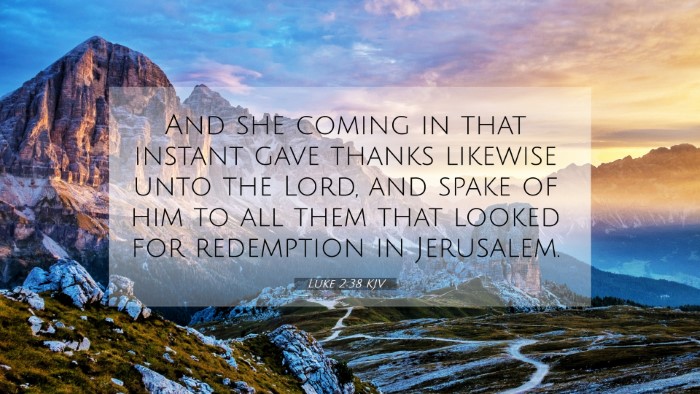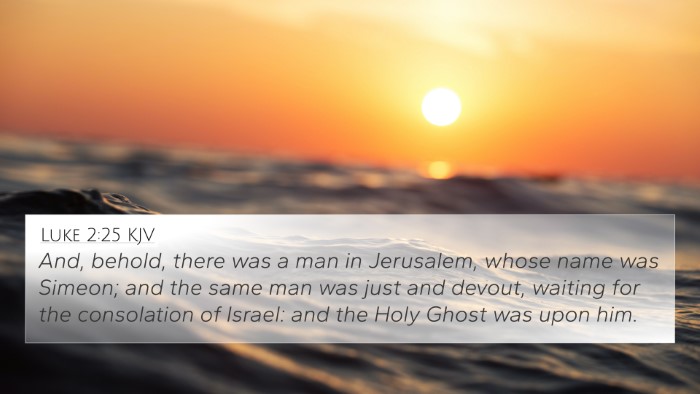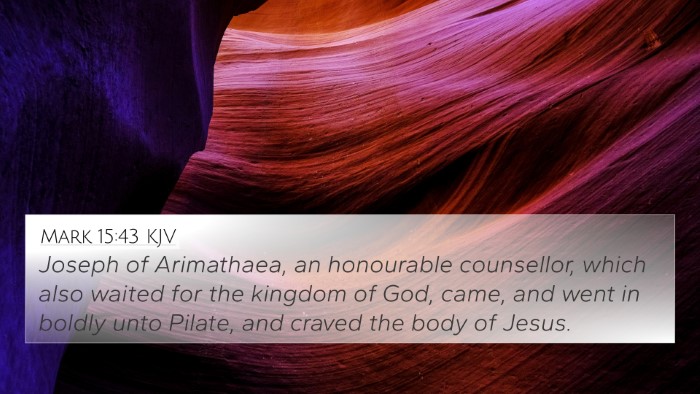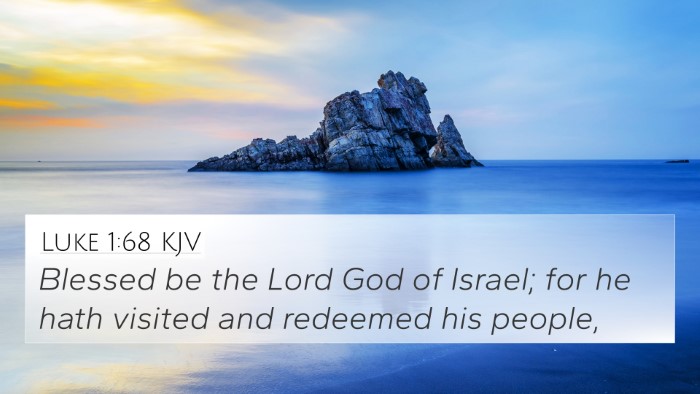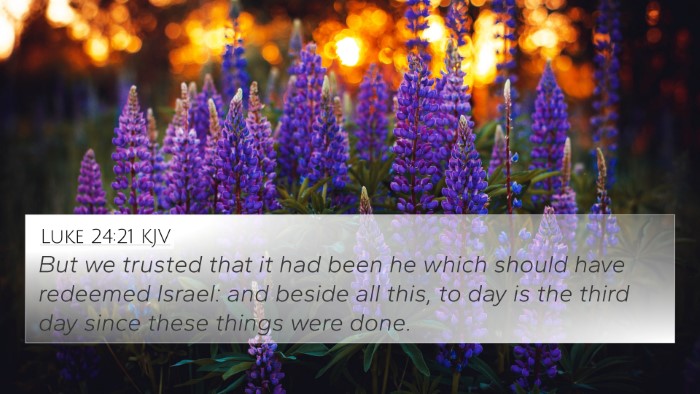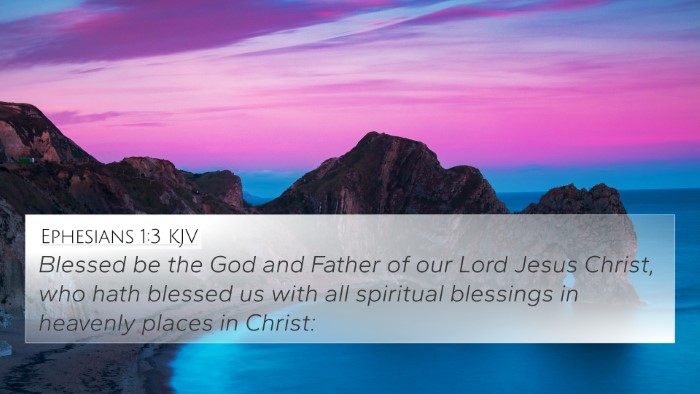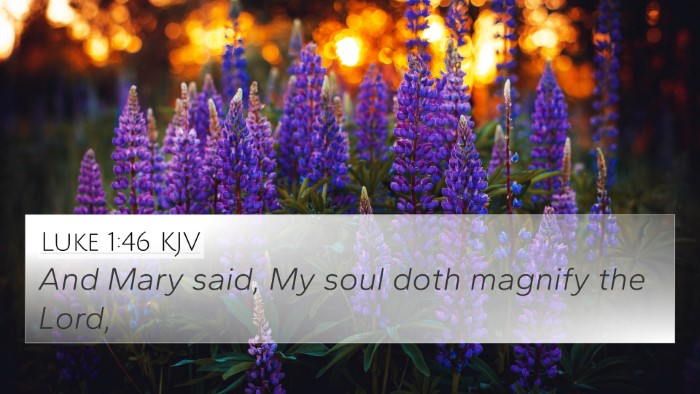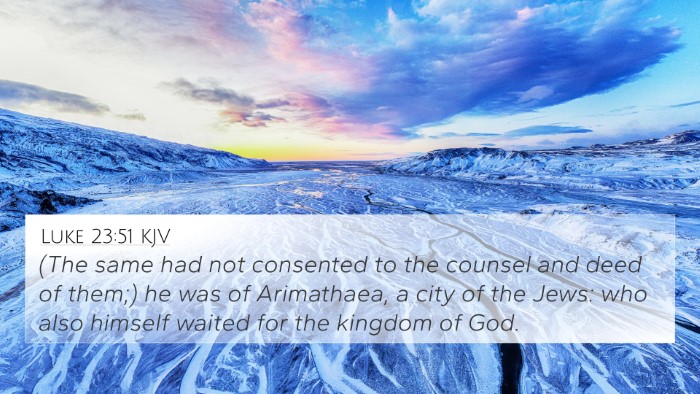Understanding Luke 2:38
Luke 2:38 states:
"And coming in that instant, she gave thanks to the Lord, and spoke of Him to all those who looked for redemption in Jerusalem."
This verse captures a profound moment in the life of Anna, a prophetess, who recognized Jesus as the Messiah at the temple. The layers of meaning derive from various commentaries, shedding light on her faith and the broader context of waiting for redemption.
Insights from Public Domain Commentaries
In her response upon meeting the infant Jesus, Anna exemplifies the act of worship and gratitude. The following points summarize insights from notable public domain commentaries:
- Matthew Henry: Matthew Henry emphasizes Anna’s piety and devotion. Her immediate response upon finding Jesus reflects a life filled with worship and prayer. He acknowledges her age and the long duration of her waiting as a testament to her unwavering faith in God’s promises.
- Albert Barnes: Albert Barnes notes the significance of Anna's testimony regarding redemption. He draws connections to the ongoing anticipation of the Messiah among the people of Israel. Her proclamation serves as a bridge between Old Testament prophecies and the New Testament fulfillment in Jesus.
- Adam Clarke: Adam Clarke elaborates on the term "redemption," which not only signifies a personal salvation but also alludes to the liberation of Israel as a nation. Anna's recognition of Jesus encapsulates both individual and collective hopes for salvation.
Thematic Connections with Other Scriptures
Luke 2:38 resonates with multiple Bible verses that discuss themes of redemption, prophecy, and the recognition of Jesus as the Messiah. Below are some cross-referenced verses that collectively deepen the understanding of this passage:
- Isaiah 40:31: Describes those who wait upon the Lord receiving strength, reflecting Anna’s long wait for the Messiah.
- Luke 1:68: Zechariah’s prophecy regarding God redeeming His people ties closely with the theme of redemption that Anna expresses.
- Luke 2:25: The narrative of Simeon, another figure who recognizes Jesus, complements Anna's story, showing the joy of witnessing God’s promise fulfilled.
- John 1:29: John the Baptist refers to Jesus as the Lamb of God, underscoring the sacrificial aspect of redemption.
- Romans 8:23: Speaks of the redemption of believers and the groaning of creation, paralleling the deep longing found in Anna’s proclamation.
- 1 Peter 1:10-12: Discusses how the prophets of the Old Testament searched for and prophesied about the grace that was to come, connecting Anna with prophetic history.
- Hebrews 9:12: Discusses Jesus' role as the redeemer, providing depth to Anna's recognition of His significance in God’s plan of salvation.
- Matthew 2:10-11: The Magi rejoicing over the star signifies the global recognition of Jesus’ importance, resonating with Anna’s acknowledgment in the temple.
- Revelation 5:9: Sings of Jesus’ redeeming work among people from all nations, reinforcing the universal aspect of redemption that Anna embraced.
Importance of Cross-Referencing Biblical Texts
Cross-referencing helps in comprehensively understanding Biblical themes and narratives. Tools for Bible cross-referencing are invaluable for researchers and laypersons alike. Here’s how they can be beneficial:
- Bible Concordance: A useful tool to find specific words and their instances throughout the Scriptures, enhancing the study of themes like redemption.
- Bible Cross-Reference Guide: This guide aids in tracing related verses, allowing readers to see the interconnectedness of Biblical texts.
- How to use Bible Cross-References: By identifying themes and parallels, readers can gain deeper insights into how different passages relate to one another.
- Bible Chain References: Linking verses together creates a narrative web, showing how various scriptures converse on similar themes.
- Bible Cross-Reference System: Different versions of the Bible may have unique cross-references, which enrich understanding by presenting various interpretations.
Conclusion
In summary, Luke 2:38 serves as a focal point illustrating Anna’s faith and the fulfillment of messianic prophecy through Jesus. By exploring related verses and employing cross-referencing methods, one can uncover the rich tapestry of connections embedded in the scriptures. Anna’s response exemplifies devotion and hope that resonates through the ages, laying the groundwork for understanding biblical eschatology and theology.
